
New Builds
What is a turnkey property? Turnkey pros and cons explained
In this article, you’ll learn what a turnkey property is and hear both sides of the argument, so you can decide whether a turnkey property is right for you.
New Builds
6 min read

Author: Laine Moger
Journalist and Property Educator, holds a Bachelor of Communication (Honours) from Massey University.
Reviewed by: Ed McKnight
Resident Economist, with a GradDipEcon and over five years at Opes Partners, is a trusted contributor to NZ Property Investor, Informed Investor, Stuff, Business Desk, and OneRoof.
You don’t always know what you’re getting when you buy a New Build. At least not when you buy a New Build off the plans.
The developer will show you the renders. Those are pictures showing you what the property will look like.
But lots of investors ask, “what will my property look like once it’s built?”
And “how often do the houses look like the renders?”
In this article, you’ll see examples of renders and what the properties look like once built.
You’ll also learn the common differences between renders and reality. Then you’ll find out what to do if your New Build isn’t built as promised.
Most of the time, finished New Builds look like their renders.
Take a look at these examples.
This 2-bed townhouse looks exactly like the renders.
The render is on the left. The finished product is on the right.
The only difference is that, in reality, you’ve got a letterbox, and the trees are a bit smaller. Pretty much identical.
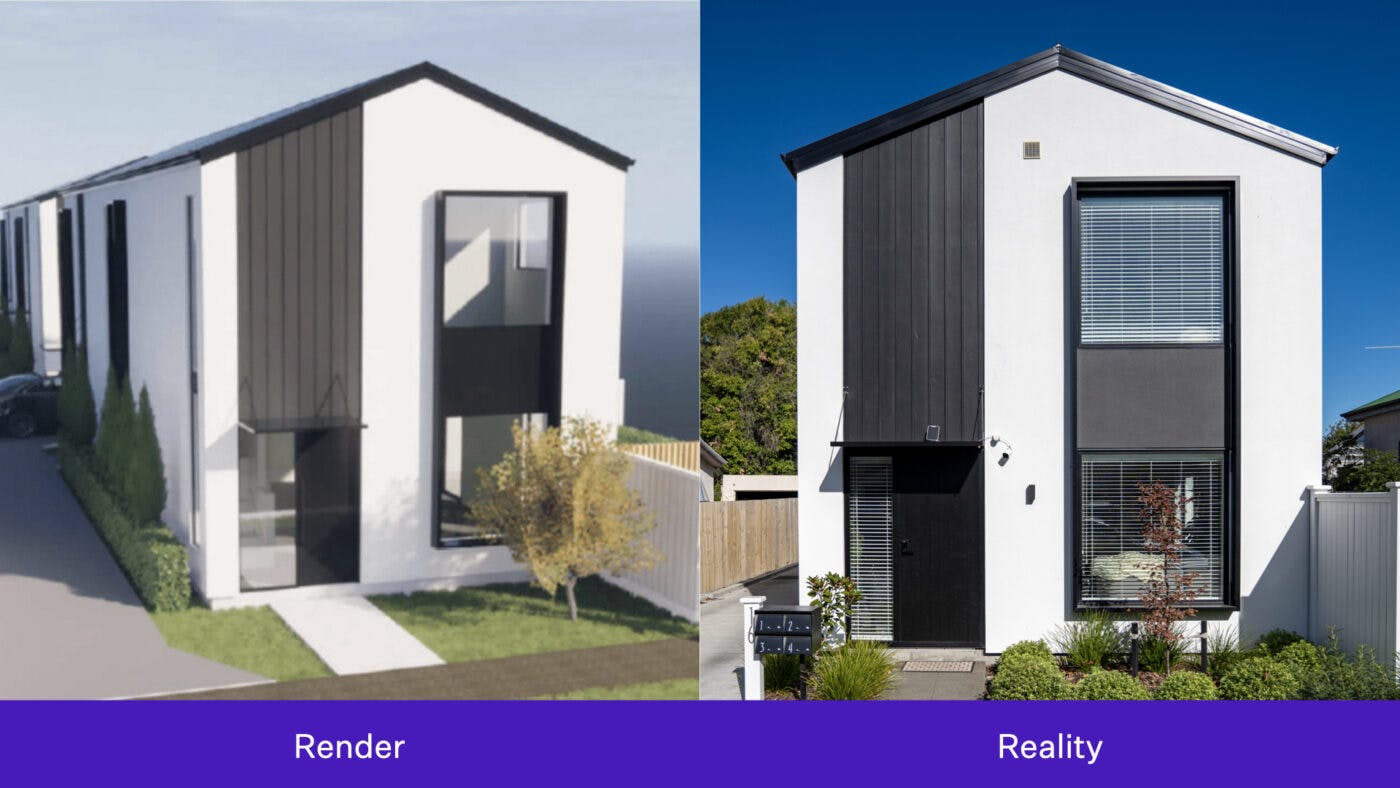
Here’s another townhouse in Christchurch.
Again. Render on the left. Reality on the right.
They are similar. But there are some small differences.
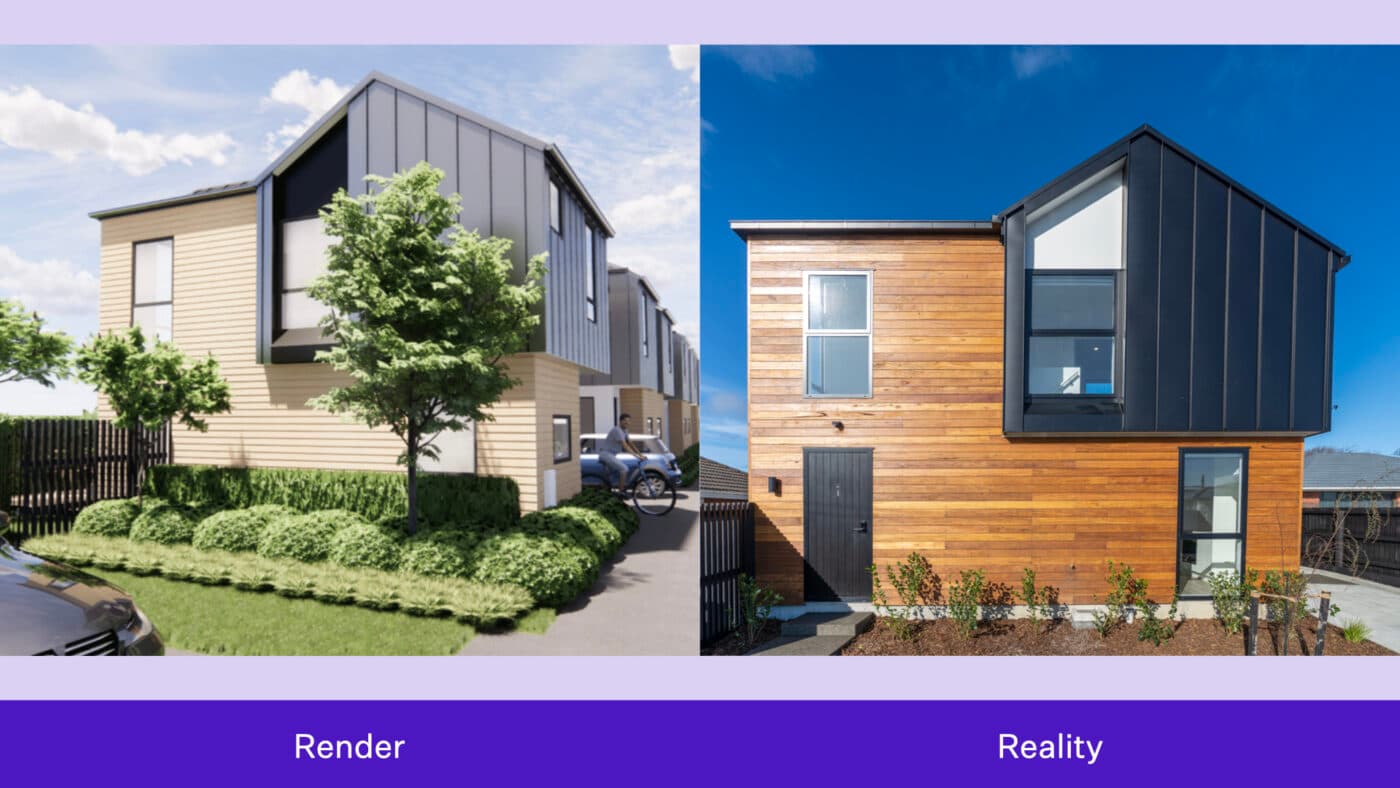
Look at the gate and the front door.
In the render, you had to walk through a gate to get to the front door. In reality, the council made the developer shift the fence to the left.
The front door goes direct to the street front. The council believes that’s safer.
In reality, the garden isn’t as leafy. The plants are newly planted. But the render shows more developed gardens.
There is also a small change in colour for the material behind the upstairs window.
So they are similar. But there are minor differences.
Here is an example of a mixed-use hotel and apartment building by Safari Group.
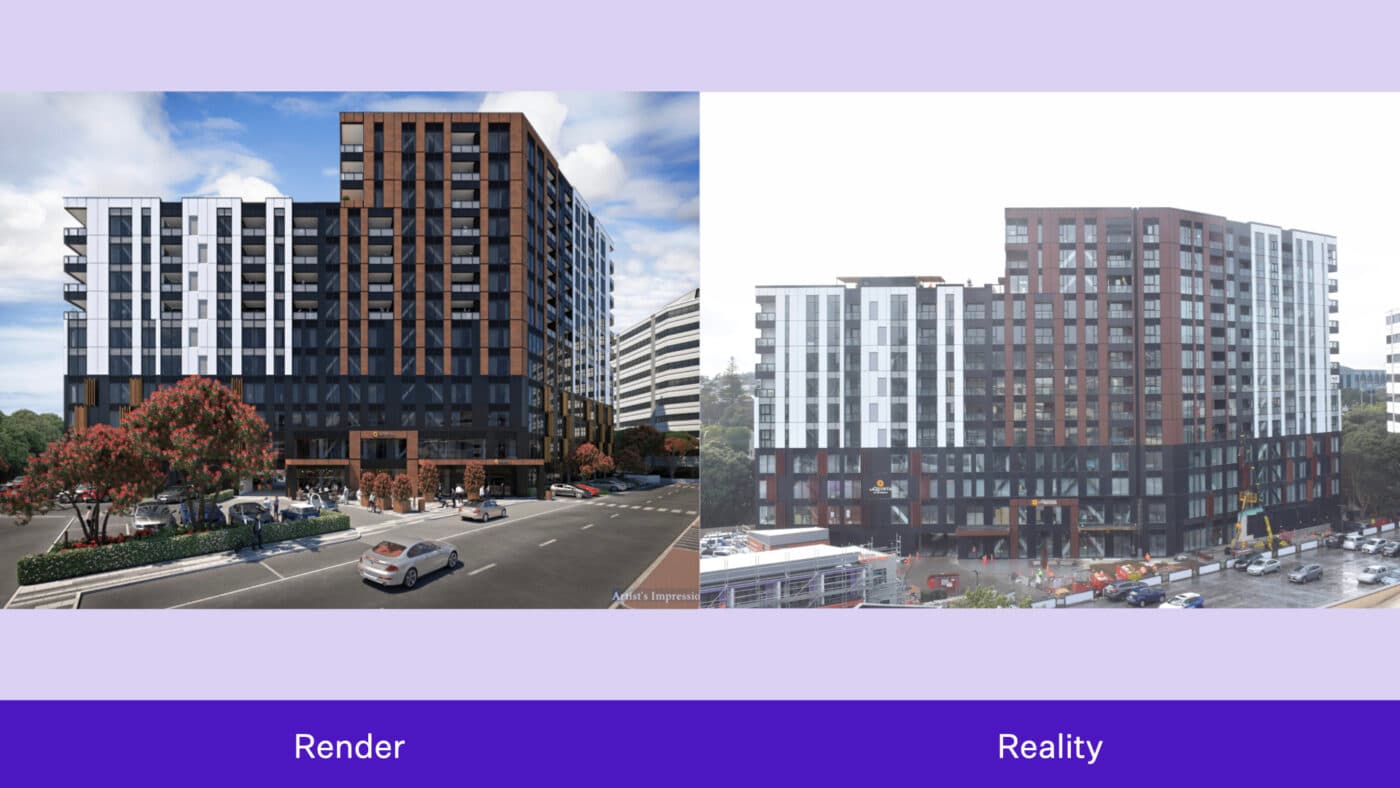
It’s like for like. The render is the same as reality.
There are usually differences between the render and reality. So you might think, "that property looks different from the pictures".
Here are the most common differences.
Architects put together renders for developers. Naturally, they want the properties to look sharp.
So architects and designers will usually put lush mature gardens in the photos. They frame a brand-new property with a 6-year-old garden.
But then the developer builds the property and puts in a new garden.
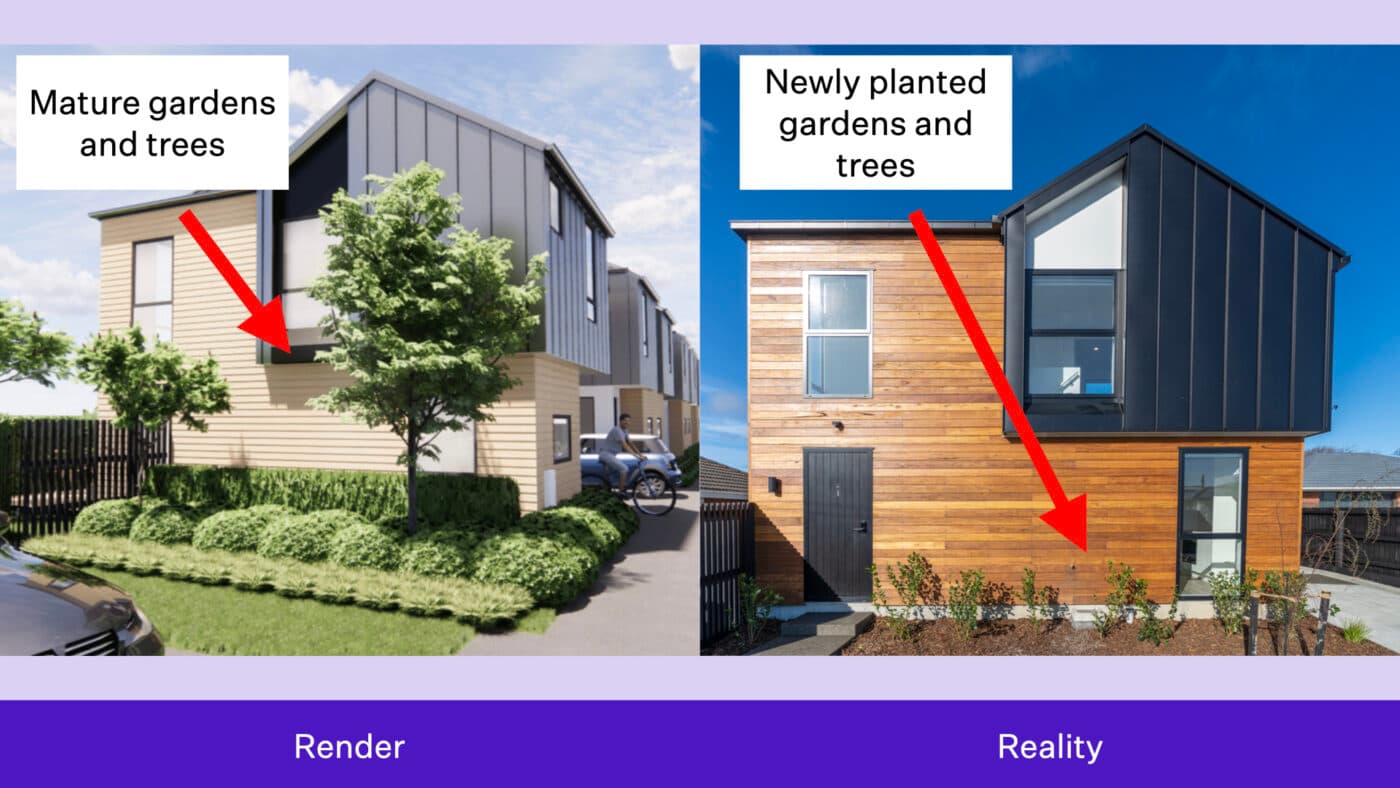
The render will have luscious hedges. There might be grown-up trees that provide privacy.
In reality, tour property may have baby trees.
Expect these differences. Because the render is an ‘artistic impression’. So the developer doesn’t have to give you a garden that looks just like the pictures.
Sometimes, the fences on a render are different from reality.
The architects creating the render don't always know what will be approved by the council.
In the case of Sugden Street, the initial plan was for tenants to walk through a gate to get to their front door.
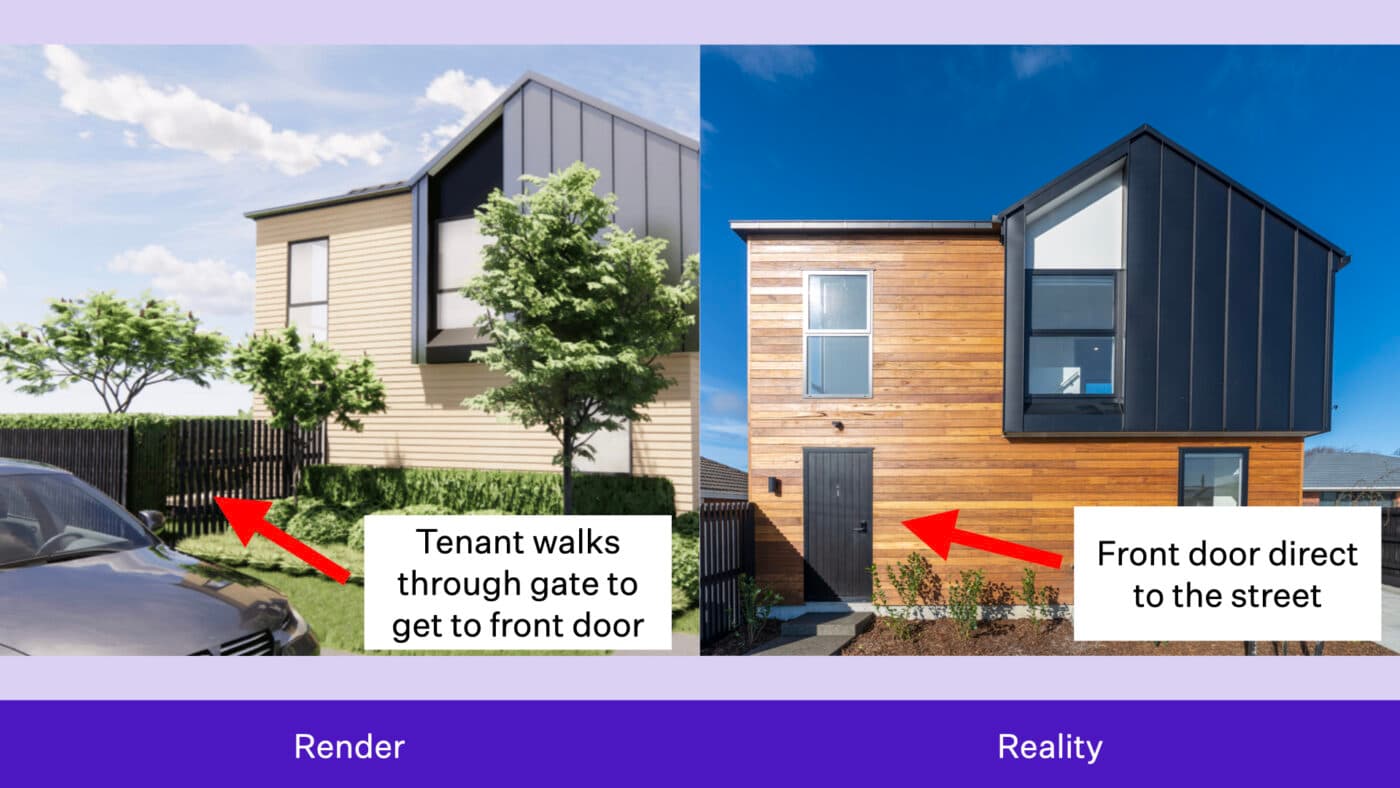
In other words, they couldn’t walk to their front door from the street.
During construction, the council effectively said: “No, you need to move the fence.”
This is a minor change. Other times, the fence might change. Because the materials in the render weren’t available.
But there are some cases when council decisions have significantly altered the property. (More on this below).
Some of the materials may also change during construction.
A small part of Sugden Street's colour scheme has changed from black to white.

Generally, this is because the materials in the render weren’t available when it came time to build.
Developers are allowed to make changes to materials without asking you. This is written into the contract. That’s so the build doesn’t slow down.
But the new materials have to be the same standard and quality.
Things can get sticky when a developer changes something, and an investor disagrees. (More on this below).
There are two main reasons.
Developers need to get the council to say ‘yes’.
If you’re buying a property off-the-plans, it may not have building consent when you sign the contract.
In some cases, the council may require big changes.
For example, the renders of one Auckland development had a front door with a window next to it.
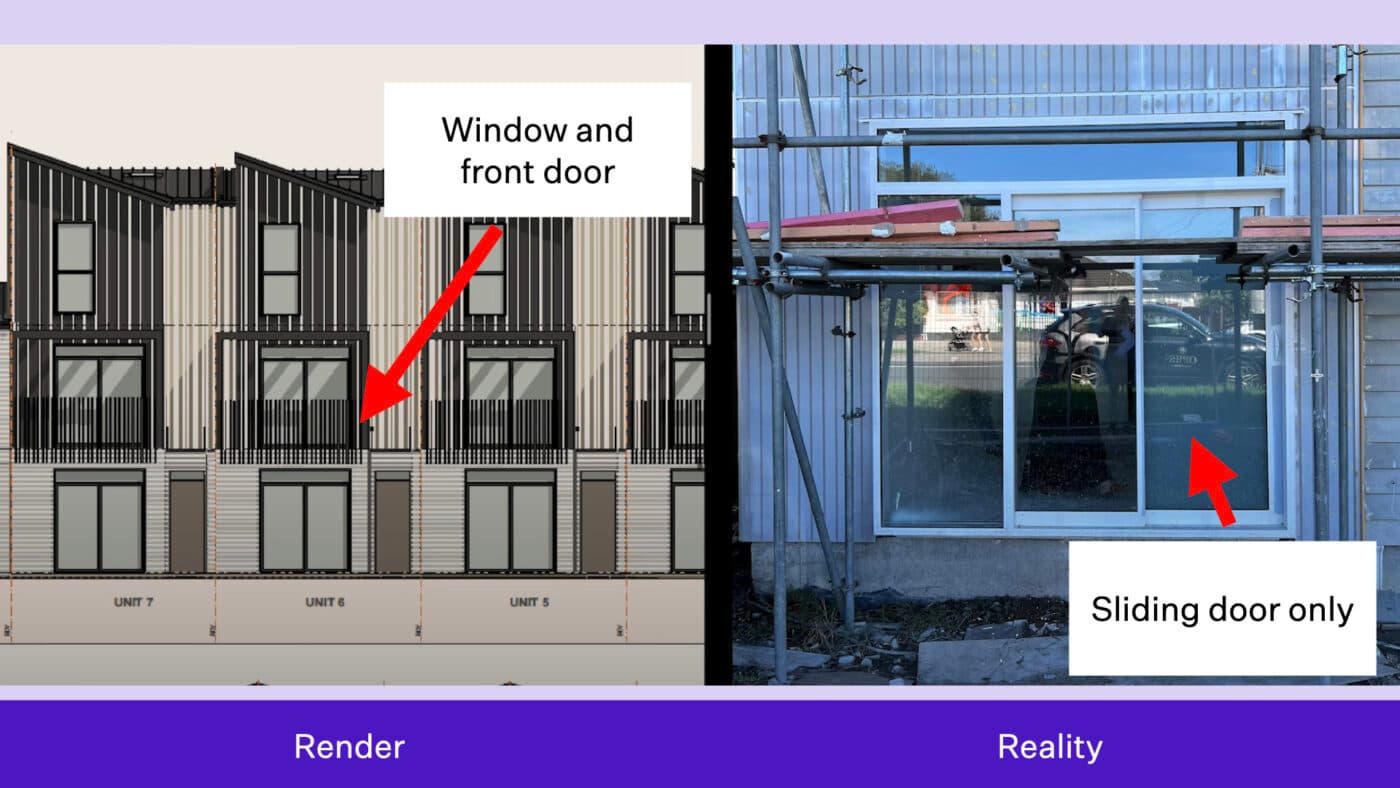
During construction, the council wouldn’t sign it off.
So, the developer substituted the front door and the window for a ranch slider.
The developer tried to do right by the first home buyer. They added extra features to compensate. Things like a deck that wasn’t in the renders.
But in this case, the buyer wasn’t happy. In this case, they got out of the contract with their deposit.
Developers usually have special clauses in their contracts. This lets them change the materials if needed.
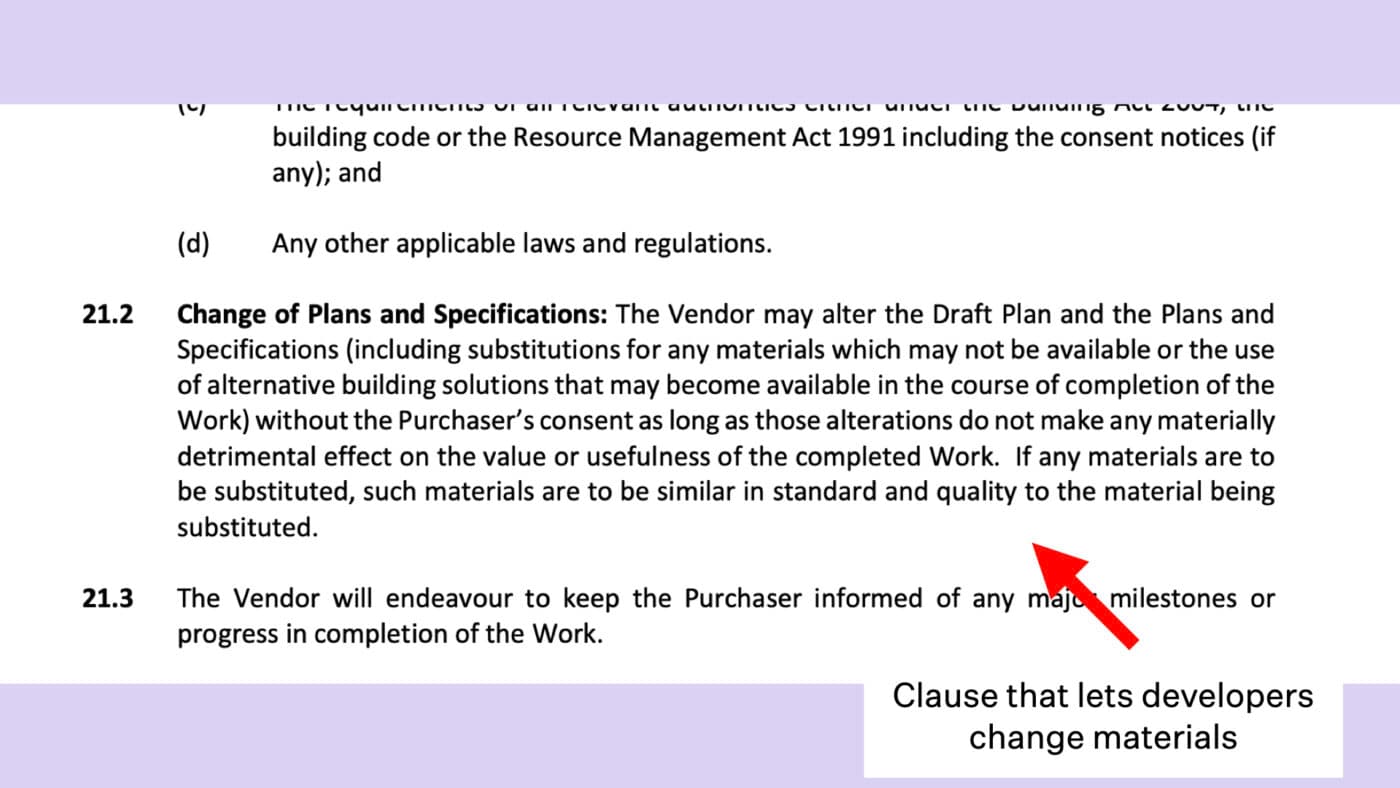
But they have to use something similar.
Look at this property. The renders show a concrete fence with a steel gate.
In reality, the developer built a timber fence.
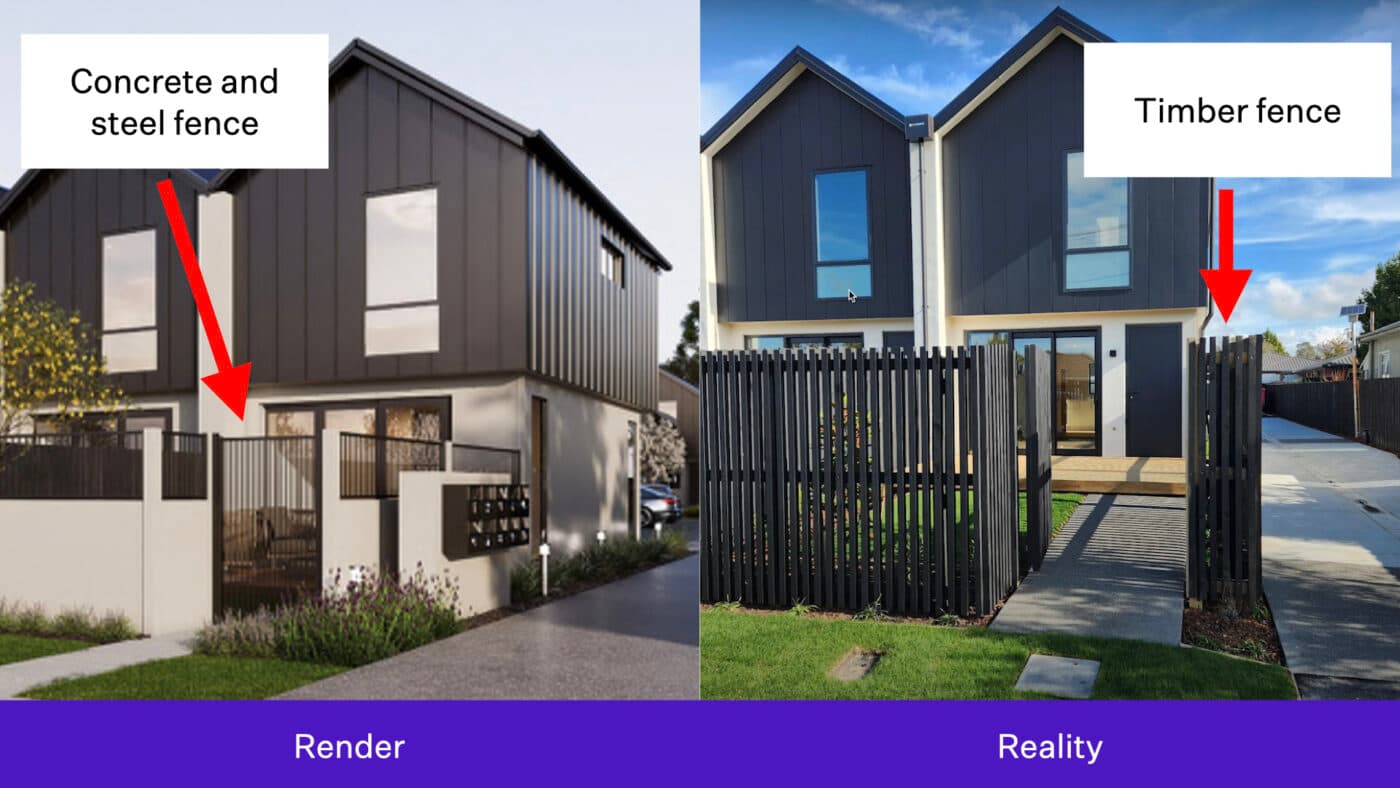
If they waited for the materials to become available, it would have added 3 months to the build.
But, the timber fence ended up being more expensive than the concrete fence.
The developer can’t always make changes. It all depends on what’s written in your specific contract.
Here at Opes Partners, the clauses are generally –
What happens if there are changes that I'm not happy about?
You can tell the developer that they have broken their contract and negotiate. Another option is to progress through your lawyer.
But what you can do all depends on what is in your specific contract.
There was a situation where a property came with a ½ bathroom downstairs next to the laundry.

The specifications said there would be a wall-hanging sink in the bathroom.
In reality, the builder didn't add the sink.
The investor was upset about it.
He thought an extra mirror and sink would be handy if two flatmates lived together.
From a legal perspective, not having the sink may impact the usefulness of the property. So you could argue it.
You can also call in a valuer. They can see what the developer built and tell you whether the property's value has changed.
If it did, the developer broke the contract. They have to compensate you.
Many investors ask whether they can withhold $5 - $10k from the developer. The idea is that they want to hold back money, so the developer has to negotiate.
Most of the time, you can’t. Many contracts have a “no withholding” clause.
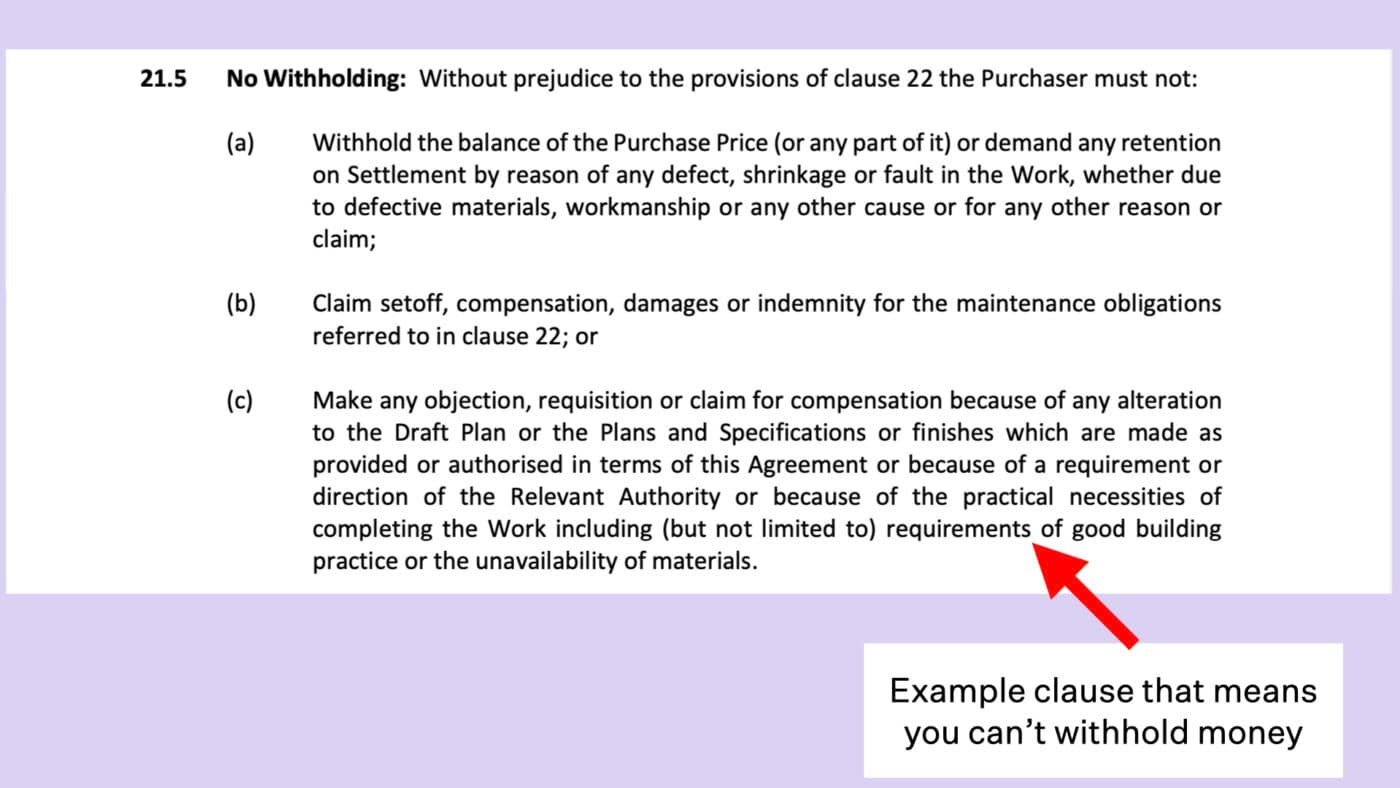
But you do have protection through the defect period. That’s where you have 12 months to tell the developer all the defects … and they have to fix it.
This is why getting a building inspector to look at your finished property is always a good idea.
They will go through and make sure the reality matches the original contract.
Here at Opes, we believe everyone who buys a new build should use a building inspector.
If you’re spending $800k on a property, paying $800 for an inspector can be worth it.
Journalist and Property Educator, holds a Bachelor of Communication (Honours) from Massey University.
Laine Moger, a seasoned Journalist and Property Educator holds a Bachelor of Communications (Honours) from Massey University and a Diploma of Journalism from the London School of Journalism. She has been an integral part of the Opes team for four years, crafting content for our website, newsletter, and external columns, as well as contributing to Informed Investor and NZ Property Investor.
This article is for your general information. It’s not financial advice. See here for details about our Financial Advice Provider Disclosure. So Opes isn’t telling you what to do with your own money.
We’ve made every effort to make sure the information is accurate. But we occasionally get the odd fact wrong. Make sure you do your own research or talk to a financial adviser before making any investment decisions.
You might like to use us or another financial adviser